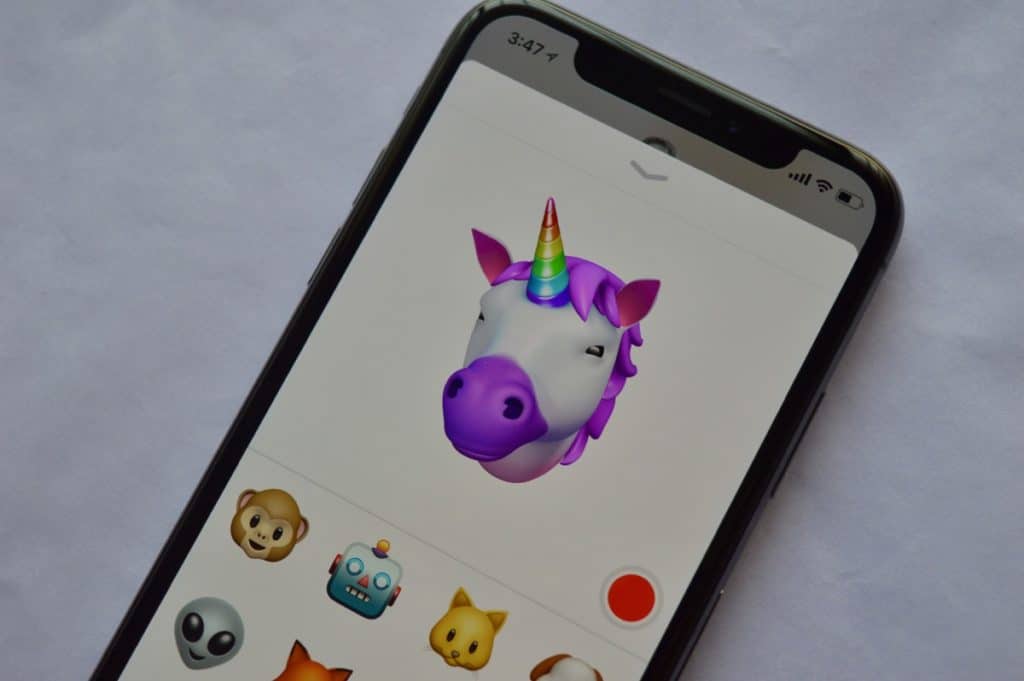
If Apple does something with its latest iPhone, expect Samsung to copy it six months later with its new flagship Galaxy S handset. With the iPhone X, Apple introduced Animoji which made use of the TrueDepth camera on the front of the handset to capture your expressions and imitate them on select emoji characters.
Six months later, Samsung is trying to copy it with AR Emoji on the Galaxy S9. The premise here is essentially the same: create animated emoji that can imitate your facial expressions. Sadly, Samsung’s implementation is not as robust as that of Apple and the end result is also wildly different.
Animoji
First, let’s talk about Animoji. Apple uses the TrueDepth camera system on the iPhone X to create a complex 3D depth map of your face. This allows the front camera to keep a tab on your facial expressions as well. You can only record new Animoji from within the Messages app in iOS 11 on the iPhone X, though you can always share them with other apps. Then, to send an Animoji, you select any of the 12 emoji characters that are available. This ranges from a dog, fox, monkey, panda to a chicken. You can then record a 10-second Animoji message in which the emoji on the screen will imitate your facial expressions while also recording your voice.

You can change the selected emoji character to something else before sending your message. This will lead to your facial expressions and voice message being matched to that emoji’s face.
AR Emoji
As for AR Emoji, Samsung’s implementation relies solely on the 8MP f/1.7 AF camera. Before you can start using AR Emoji, you will have to set it up. This is a simple process and requires you to take a picture of yourself smiling with your mouth closed. With the help of machine learning then and the captured data, the Galaxy S9 creates an animated cartoon character that closely matches you. The end result is similar to Snapchat’s Bitmoji rather than Apple’s Animoji. Similar to Animoji, the AR Emoji can also capture your facial expressions, though if the early hands-on demos are anything to go by, it does not work properly.
https://youtu.be/3Hla9LsYfrg
You can also customize this AR Emoji including its hairstyle, sunglasses, and more. You can quickly access the created AR Emoji using the stock keyboard or within the messages app. It can also be shared in GIF or PNG format which makes it easier to share, and it is also possible to use AR Emoji as ‘stickers’ with compatible apps.

Samsung also has an interesting approach with AR Emoji. If you do not want the AR Emoji character to be based on you, Samsung offers you the option to use Mickie and Minnie as alternative characters as well. Samsung did not talk much about this in its presentation so it is unclear if the Galaxy S9’s AR Emoji feature has more Disney characters or not.
Animoji Vs AR Emoji: Key Differences Explained
#1 Complex Yet Accurate
For Animoji, Apple uses a highly complex TrueDepth camera system on the iPhone X to map the user’s facial expressions. Some might believe that Apple’s implementation is overly complicated, but it ends up being more accurate as well.
Samsung, in comparison, only uses the Galaxy S9’s 8MP F/1.7 selfie shooter for AR Emoji. This leads to AR Emoji being not as reliable as Animoji in capturing one’s facial expressions. It can also fail to create an identical looking AR Emoji of one’s face in many scenarios.

#2 Customizable
With Animoji on the iPhone X, all you can do is use one of the emoji characters included by Apple to imitate your facial expressions. As of now, there are 12 Animoji characters on the iPhone X, though Apple will expand this list with the upcoming iOS 11.3 update.
AR Emoji on the Galaxy S9 is more customizable in comparison. You customize the look of your AR Emoji by changing its hairstyle, clothes, skin tone, and sunglasses. And if you want, you can decide to not use your own AR Emoji at all. Instead, you can use popular Disney characters like Mickey and Minnie to imitate your facial expressions and send it to your friends and family. The latter is something that is not possible with Animoji at all and gives AR Emoji a key win over it.
#3 Easier Sharing
To record an Animoji, you have to open the Messages app on your iPhone X. Then, you can record a 10-second clip that you can send to your friends who are on the same platform. You can also share an Animoji as a GIF on social media networks.
In comparison, it is far easier to share an AR Emoji. Once you customize your AR Emoji, it is saved as a collection of 18GIFs which you can easily access from the keyboard inside any app for easier sharing. Additionally, you can also share an AR Emoji as a GIF or PNG.
Ultimately, as you can see, despite what the AR Emoji name suggests, Animoji and AR Emoji are very different from each other. Samsung has essentially made a half-hearted attempt at copying’s Apple’s Animoji feature with the Galaxy S9.